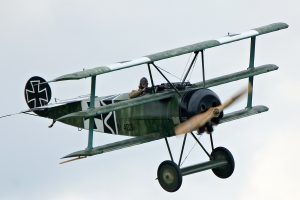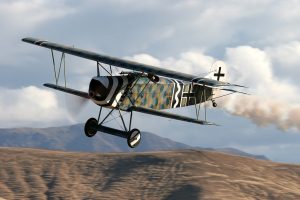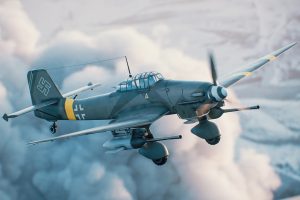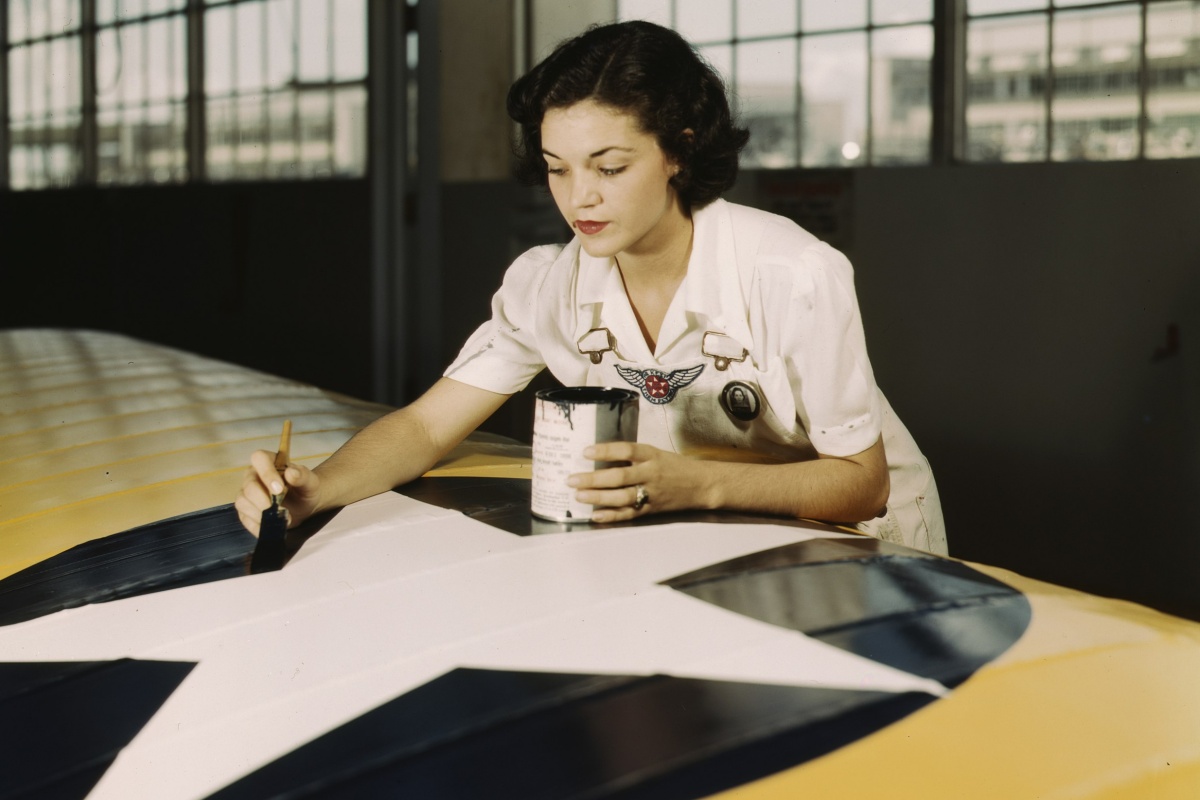As I mentioned in the previous section, in this work I will focus on the origin of the German insignia. Although the then Luftstreitkräfte was officially established in 1910 and the aircraft were initially used only for reconnaissance purposes, so there was no need to significantly mark the machine, but this was completely changed by the outbreak of the First World War. For the then ground and air units, it was necessary to clearly distinguish their own aircraft from those that belonged to the enemy.
Iron cross
 Initially, several variants of the chessboard were designed in various colors, including a black, red and white or similar colored circle with black stripes. In the end, but not by chance, the Iron Cross symbol (Eisernes Kreuz) won on the white field. This emblem has been used on various flags or banners since the time of the Templars, it also reflected the heritage of Germany as the Holy Roman Empire, and the choice for the then conservative command was quite clear. With this step, the country’s air force also became the only user of the so-called square roundel until the end of the First World War.
Initially, several variants of the chessboard were designed in various colors, including a black, red and white or similar colored circle with black stripes. In the end, but not by chance, the Iron Cross symbol (Eisernes Kreuz) won on the white field. This emblem has been used on various flags or banners since the time of the Templars, it also reflected the heritage of Germany as the Holy Roman Empire, and the choice for the then conservative command was quite clear. With this step, the country’s air force also became the only user of the so-called square roundel until the end of the First World War.
The mobilization of the Imperial German Army in September 1914 (about a quarter of a year earlier than the British RFC) led to orders to mark the wings of aircraft from the top and bottom and on both sides of the rudder with black-footed crosses (Tatzenkreuz) on a white square field. Marking on the fuselage was done from both sides as well, but it was not explicitly required by order and it was in a way an optional marking. The exact dimensions and shape of the insignia were not precisely determined at first, so its production depended to a large extent on the painter of the emblem, which led to various variants or even the omission of the white background.
 In July 1916, the exact dimensions of the symbol were finally introduced with the intention of unifying its original shape and appearance. However, this intention was only partially successful, because in October of the same year, instead of a white background, only a 5 cm wide edging around the entire cross began to be used. In March 1918, a new roundel was ordered in the form of an isosceles Greek Black Cross (Balkenkreuz), but due to the fact that the proportions were not determined until April, many repainted characters were of non-standard size. In May, it was then replaced by a narrower version in which only the arms of the cross itself were lined with white. A month later, this edging ceased to be used if the machine had, for example, an all-white paint, a white rudder or night bombers.
In July 1916, the exact dimensions of the symbol were finally introduced with the intention of unifying its original shape and appearance. However, this intention was only partially successful, because in October of the same year, instead of a white background, only a 5 cm wide edging around the entire cross began to be used. In March 1918, a new roundel was ordered in the form of an isosceles Greek Black Cross (Balkenkreuz), but due to the fact that the proportions were not determined until April, many repainted characters were of non-standard size. In May, it was then replaced by a narrower version in which only the arms of the cross itself were lined with white. A month later, this edging ceased to be used if the machine had, for example, an all-white paint, a white rudder or night bombers.
World War II and the post-war return to the roots
 After the dissolution of the Luftstreitkräfte in May 1920, the use of the emblem disappeared and reappeared only with the rise of the Nazi Party, which in 1937 introduced completely new rules for the air round. At first, only the red-white-black flag of the German Empire appeared on the signposts, but it was soon replaced by the flag of the Nazi party. After the official renewal of the Luftwaffe, military aircraft began to use the iron cross from 1918 (so-called Balkenkreuz) on both sides of the fuselage, and by July 1939 the already mentioned Nazi flags were added to the signpost (in two standardized dimensions).
After the dissolution of the Luftstreitkräfte in May 1920, the use of the emblem disappeared and reappeared only with the rise of the Nazi Party, which in 1937 introduced completely new rules for the air round. At first, only the red-white-black flag of the German Empire appeared on the signposts, but it was soon replaced by the flag of the Nazi party. After the official renewal of the Luftwaffe, military aircraft began to use the iron cross from 1918 (so-called Balkenkreuz) on both sides of the fuselage, and by July 1939 the already mentioned Nazi flags were added to the signpost (in two standardized dimensions).
After the introduction of camouflage, they were replaced by a black and white swastika on both sides of the fuselage, wings and rudder. During the Second World War, their appearance became more and more simpler and the edges remained only in a contrasting color. As with the British roundel, some of Germany’s allies used different variants of the Iron Cross. For example, Croatia had a cross stylized as a leaf, Hungary had a straight cross with inverted colors, Romania a yellow cross with a tricolor roundel in the middle and Slovakia a white-blue cross with a red dot in the middle. During the First World War, the German ally was also Austria-Hungary, which until 1916 supplemented the marking of its aircraft with a vertical red-white-red tricolor on both sides of the rudder.
In the early 1950s, West Germany returned to the use of the 1916 Footed Iron Cross with a white line on its shoulders, while East Germany used a hammer and compass route in a wheat “laurel” on a vertical black-red-yellow background. After the reunification of the two states in 1990, the old  East German emblems were replaced by a uniform style of gray iron cross with arms lined with white and blue lines, which is used by the Air Force, Navy and Army to this day. Thanks to the gradual development of the country’s emblem and the need to present national identity, the Luftwaffe is no longer the only air force with a so-called square roundel on its machines. Today, Poland also has this type, which has a red and white chessboard in its emblem. For a change, Indonesia uses a red pentagram with a black star in the middle, and Lithuania uses two Latin crosses joined together. This concludes the second part of the history of the roundel, in the last we will look at the development of the emblem of the fourth most famous user, which is the US Air Force. In it you will learn how the originally red blue roundel with the white star and longitudinal stripes was created from the originally red star.
East German emblems were replaced by a uniform style of gray iron cross with arms lined with white and blue lines, which is used by the Air Force, Navy and Army to this day. Thanks to the gradual development of the country’s emblem and the need to present national identity, the Luftwaffe is no longer the only air force with a so-called square roundel on its machines. Today, Poland also has this type, which has a red and white chessboard in its emblem. For a change, Indonesia uses a red pentagram with a black star in the middle, and Lithuania uses two Latin crosses joined together. This concludes the second part of the history of the roundel, in the last we will look at the development of the emblem of the fourth most famous user, which is the US Air Force. In it you will learn how the originally red blue roundel with the white star and longitudinal stripes was created from the originally red star.
source:
https://cs.wikipedia.org/wiki/Tlapatý_kříž
https://en.wikipedia.org/wiki/Balkenkreuz
https://cs.wikipedia.org/wiki/Luftstreitkräfte
https://en.wikipedia.org/wiki/Luftstreitkräfte
https://cs.wikipedia.org/wiki/Routa_(obrazec)
https://cs.wikipedia.org/wiki/Luftwaffe_(Bundeswehr)
https://en.wikipedia.org/wiki/Military_aircraft_insignia

